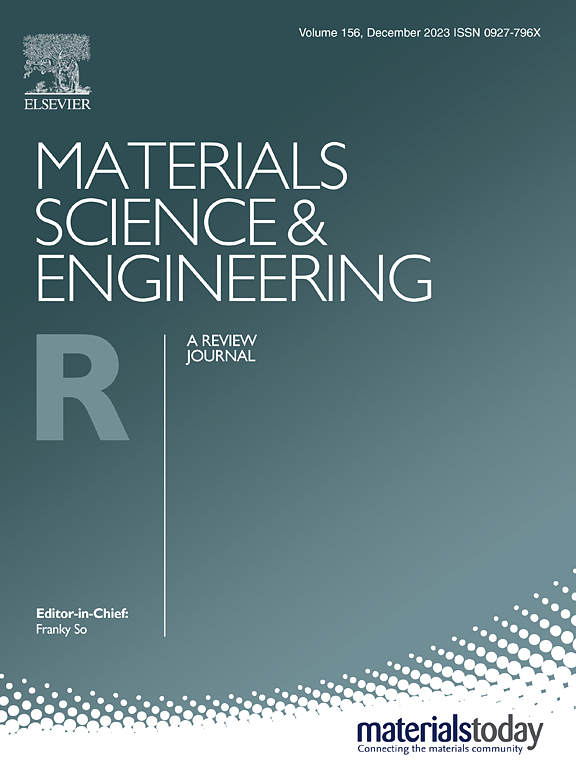Biobased and aromatic Covalent Adaptable Networks: When architectures meet properties, within the framework of a circular bioeconomy
IF 31.6
1区 材料科学
Q1 MATERIALS SCIENCE, MULTIDISCIPLINARY
引用次数: 0
Abstract
In the current context of environmental emergency, the need for sustainable materials with controlled end-of-life is paramount. Covalent Adaptable Networks (CANs) are a novel class of polymers offering a unique solution by combining the main advantages of thermosets and thermoplastics such as high mechanical performance and recyclability. Sustainable feedstocks, such as biobased compounds from biomass represent nowadays prime alternatives to fossil-based chemicals. Consequently, aromatic-rich renewable resources, owing to their abundances and structural variety, are feedstocks of choice in the design of materials combining performance, sustainability, and circularity. Then, the substitution of fossil-based raw materials with biobased compounds for the preparation of CANs is improving, among which aromatic structures, such as lignins, tannins, cashew nutshell liquid or furan, provide unprecedented features and properties. After a description of CANs general features and the presentation of available biobased aromatic feedstocks, an overview of recent advances in the synthesis of biobased aromatic networks is presented. An emphasis is placed on the opportunity offered by the aromatic building blocks functional groups to implement dynamic covalent chemistries. Subsequently, an understanding on the benefits of aromaticity on specific properties required for targeted applications, including sensors, adhesives, flame retardants, biomedical devices, or coatings, is proposed. All these proving the design of biobased and aromatic CANs to be a considerable step towards for a more sustainable future in the frame of a circular bioeconomy.
生物基芳香共价适应网络:在循环生物经济的框架内,当结构与特性相遇时
在当前环境紧急的背景下,最重要的是需要可控制报废期的可持续材料。共价可适应网络(CAN)是一类新型聚合物,它结合了热固性塑料和热塑性塑料的主要优点(如机械性能高和可回收利用),提供了一种独特的解决方案。可持续原料,如来自生物质的生物基化合物,是当今化石基化学品的主要替代品。因此,富含芳香族的可再生资源,由于其丰富性和结构多样性,成为设计兼具性能、可持续性和循环性的材料的首选原料。在制备 CAN 的过程中,生物基化合物对化石原料的替代作用正在不断提高,其中木质素、单宁、腰果壳液或呋喃等芳香结构提供了前所未有的特征和特性。在介绍了 CANs 的一般特征和可用的生物基芳香族原料之后,概述了合成生物基芳香族网络的最新进展。重点介绍了芳香族构件官能团提供的实施动态共价化学反应的机会。随后,介绍了芳香族对目标应用(包括传感器、粘合剂、阻燃剂、生物医学设备或涂料)所需特定性能的益处。所有这些都证明,在循环生物经济的框架下,设计生物基芳香族 CANs 是朝着更可持续的未来迈出的重要一步。
本文章由计算机程序翻译,如有差异,请以英文原文为准。
求助全文
约1分钟内获得全文
求助全文
来源期刊

Materials Science and Engineering: R: Reports
工程技术-材料科学:综合
CiteScore
60.50
自引率
0.30%
发文量
19
审稿时长
34 days
期刊介绍:
Materials Science & Engineering R: Reports is a journal that covers a wide range of topics in the field of materials science and engineering. It publishes both experimental and theoretical research papers, providing background information and critical assessments on various topics. The journal aims to publish high-quality and novel research papers and reviews.
The subject areas covered by the journal include Materials Science (General), Electronic Materials, Optical Materials, and Magnetic Materials. In addition to regular issues, the journal also publishes special issues on key themes in the field of materials science, including Energy Materials, Materials for Health, Materials Discovery, Innovation for High Value Manufacturing, and Sustainable Materials development.
 求助内容:
求助内容: 应助结果提醒方式:
应助结果提醒方式:


